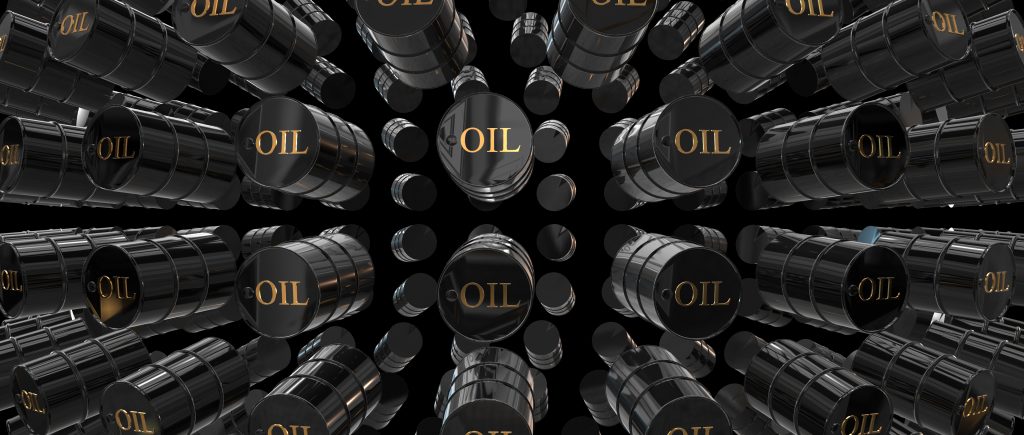Oil prices ticked up slightly on Monday, lifted by a combination of U.S. tariff exemptions on electronic goods and a sharp rebound in China’s crude imports for March. However, concerns over an escalating U.S.-China trade war and its impact on global economic growth continued to limit gains.
As of 08:22 GMT:
- Brent crude futures rose $0.08, or 0.12%, to $64.84 per barrel
- West Texas Intermediate (WTI) crude climbed $0.10, or 0.16%, to $61.60 per barrel
Trade Policy Whiplash Keeps Markets Cautious
The modest rebound in prices followed news late Friday that the Trump administration would exclude smartphones, computers, and certain electronics from its latest 145% tariff list on Chinese goods. The exemption helped ease fears of supply chain disruptions for major U.S. importers and manufacturers.
Still, uncertainty remains high after a string of tariff announcements followed by policy reversals. President Trump said on Sunday he would reveal a separate tariff rate on semiconductors later this week, keeping investors on edge.
China’s March Crude Imports Jump Nearly 5% YoY
Providing additional support, China’s crude oil imports rose sharply in March, up nearly 5% year-over-year, according to customs data released Monday. The increase was driven by:
- Resumed Iranian shipments
- A rebound in Russian crude deliveries
China’s import strength contrasts with broader concerns about slowing global demand, suggesting short-term resilience in the world’s largest oil importer.
Oil Prices Still Down Sharply in April
Despite today’s gains, Brent and WTI are both down about $10 per barrel since the start of the month, as the U.S.-China trade conflict intensified. The market has responded with lowered price forecasts and increased concerns about a prolonged demand slowdown.
Goldman Sachs Slashes Forecasts, Warns of Sluggish Demand
Goldman Sachs now forecasts:
- Brent to average $63 and WTI $59 for the remainder of 2025
- Brent to average $58 and WTI $55 in 2026
Analysts see global oil demand in Q4 2025 rising by just 300,000 barrels per day, a steep drop from previous years. The sharpest slowdown is expected in demand for petrochemical feedstocks, typically used in manufacturing plastics and fertilizers.
Market Structure Shifts: Brent Moves into Contango
According to BMI (a unit of Fitch Solutions), the Brent futures curve has flipped into contango, where front-month prices are lower than longer-dated contracts. This signals that investors are anticipating oversupply and weak demand, rather than any near-term shortage.
U.S. Drilling Activity Slows as Demand Outlook Worsens
Reflecting a cautious production outlook, the U.S. oil and gas rig count fell for the third consecutive week, according to Baker Hughes (NASDAQ:BKR). Producers appear reluctant to expand operations in the face of falling prices and uncertain global demand.
Geopolitical Developments: Iran Oil Exports Under Pressure
U.S. Energy Secretary Chris Wright hinted that Washington may halt Iranian oil exports as part of renewed pressure on Tehran. This could tighten supply, particularly in Asia, but markets have so far shrugged off the headline amid broader concerns over demand.
Meanwhile, U.S. and Iranian officials held “positive” talks in Oman over the weekend, agreeing to reconvene next week, potentially hinting at diplomatic de-escalation in the region.
Outlook: Cautious Optimism, But Risks Linger
While Monday’s price gains reflect improved sentiment on China and selective tariff relief, the broader oil market remains weighed down by:
- Worsening demand forecasts
- Ongoing trade war tensions
- Rising supply concerns
Traders will be watching closely for:
- Trump’s next tariff announcement on semiconductors
- The U.S.-Iran negotiations
- This week’s U.S. inventory and rig data
- Any signals from OPEC+ on potential output adjustments
For now, oil prices appear to be in stabilization mode, but any surprise from the geopolitical or macro front could quickly shift the balance.
 Noor Trends News, Technical Analysis, Educational Tools and Recommendations
Noor Trends News, Technical Analysis, Educational Tools and Recommendations





